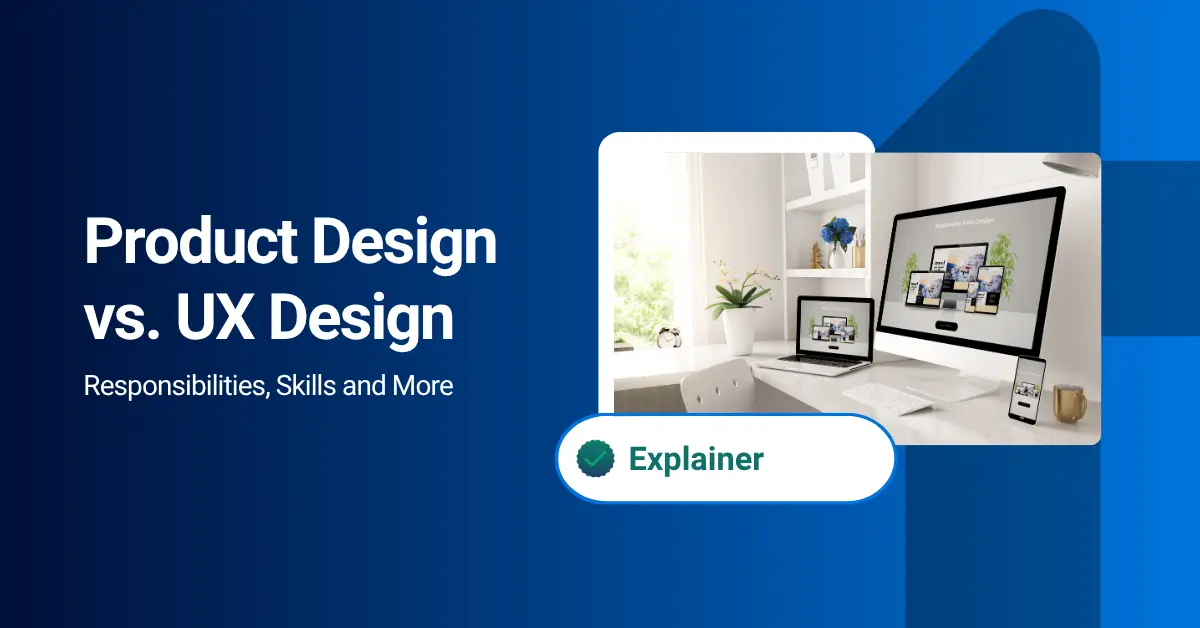People often confuse product design and UX design, using the terms interchangeably when, in fact, they are different roles, even though there are some similarities.
Both roles share the goal of creating great user experiences and solving users’ needs, but differ in terms of focus and scope on design processes and user approach.
Product design takes the broader approach of balancing business strategy and product functionality while while UX design focuses on product usability, interaction design, and user satisfaction throughout the customer journey.
In this guide, we’ll explore the difference, and similarities between a product design and UX design.
Here’s what we’ll cover:
- What is product design?
- What is ux design?
- Product design vs. UX design: Key differences
- Product design vs. UX design: Similarities
- Product designer vs. UX designer: Skills
- Product designer vs UX designer: Responsibilities and salaries
- Conclusion
- Frequently asked questions
What is product design?
Product design is the process of researching, creating, and designing products that solve a specific need in the market. Product designers function to bring a product from ideation to iteration until the product is fully moved into the market, where it meets or solves users’ needs.
Additionally, product designers also ensure that the product helps achieve business goals.
Product designers conduct extensive research on users’ needs, and conduct market and competitor analysis that helps them come up with ideas and strategies to build products functional to users’ needs.
The scope of a product designer’s job includes:
- Conduct surveys and user interviews to identify product needs, understand user needs, and gather research insights.
- Ideate and design product concepts based on data collected from research.
- Create product prototypes, a preliminary version of a product that allows designers and stakeholders to test functionality, usability, and user flow before full-scale development or launch.
- Test products and runs A/B tests with stakeholders to identify gaps and areas for improvement.
- Iterate and refine designs based on user and stakeholder feedback to enhance product performance.
- Use tools such as Figma, Jira, and ProductBoard to design, manage workflows, and track progress toward product goals.
- Collaborate with stakeholders, including marketing, sales, UX, and engineering teams, to align design strategy with business objectives, budgets, and market goals.
The role of a Product Designer covers the entire product lifecycle, from research to launch.
What is UX design?
UX design, or user experience design, focuses on creating digital products that prioritize ease of use, satisfaction, and accessibility. They focus on the user’s experience while interacting with the products.
It combines usability and interaction design to ensure users can smoothly complete tasks like placing an order or signing up.
UX designer focus on ensuring that the product design is responsive to the user’s interactions, considering all interactive elements such as buttons, page transitions, animations, a responsive and intuitive interface, and other elements that help users complete tasks or actions without hassles while using the digital product.
The scope of a UX Designer’s role includes:
- Conduct user research through surveys, interviews, and usability tests to understand user behavior, needs, and pain points while interacting with digital products.
- Create user personas to visualize how users interact with a product and identify opportunities for improvement.
- Design wireframes and interactive prototypes that illustrate the product’s user flow, layout, and navigation before development.
- Focus on usability and accessibility, ensuring users can easily complete tasks like signing up or placing an order.
- Run usability testing using tools like Maze and Hotjar to observe how real users interact with prototypes and identify any pain points.
- Use design tools such as Figma and Adobe XD to create intuitive interfaces that align with the overall product vision.
- Collaborate with UI designers, developers, and stakeholders to ensure the final product is seamless for the users to interact with and be satisfied.
UX designers anticipate the problems users might encounter while using the product and work up solutions to help users interact with the product seamlessly.
Product design vs UX design: Key differences
To distinguish between these two roles, here is a clear definition of the differences that exist between them.
| Category | Product Design | UX Design |
| Goal | Design products that balance business goals, user needs, and technical feasibility. | UX design is aimed at designing products that are intuitive and responsive, and focuses on the end user’s interaction with the product. |
| Scope | Covers the entire product lifecycle. From product ideation to launch and growth. | The main focus is to design, test, and improve products for usability and seamless user interactions. |
| Tools | Figma, Sketch, Adobe Creative Suite, Miro. | Figma, Adobe XD, Maze, Hotjar. |
| Collaboration | Works with product managers, engineers, marketers, and stakeholders to align product needs with business goals. | Works closely with UI designers, researchers, and developers, including the product designer in many cases. |
| Deliverables | Product strategy, Product thinking, wireframes, high-fidelity designs, design systems. | User journey maps, prototypes, wireframes, usability reports. |
| Metrics for Measurement | Product adoption in the market, retention rate, and revenue growth. | User satisfaction, Ability to use the products seamlessly, and Task success rate. |
Learn more: What is a Product Designer? Responsibilities, Skills, and More
Product design vs. UX design: Similarities
Both career paths are not entirely isolated; they share some similarities.
- Research: Both designers must research to understand the scope of their roles. They conduct user interviews and surveys, and work based on feedback from research. The UX designer will go into researching how users interact with a product, while the product designer will research users’ needs and create products that meet the needs of the user.
- Tools: Both the UX designers and product designers use the same tools during the design process. They both conduct user interviews and surveys with platforms like Google Forms or SurveyMonkey. Use Figma or Adobe XD for design and prototyping, and InVision to visualize and test concepts.
Miro and FigJam for brainstorming, manage projects using Jira, Asana, and Trello, and maintain real-time collaboration through Google Workspace, Microsoft Teams, Zoom, and Slack to ensure seamless teamwork across stages of the design process. - User-Centered: Both Product Design and UX Design share a user-centered approach built on empathy, research, prototyping, and iteration. Designers in both roles seek to understand user needs, test ideas early, and refine solutions based on feedback.
Product designer vs. UX designer: Skills
Both the product designer and the UX designer need a certain skillset to be able to function optimally in their roles.
Product Designer Skill Set
Technical Skills:
- Strong knowledge of product design, design thinking, and how to create products that hit the user’s pain points.
- Ability to conduct research and work with research results to create user-centered products.
- General understanding of HTML, CSS, and JavaScript.
- Knowledge of Tools, especially Figma and Adobe XD. Plus other tools needed in the product design process.
Soft Skills:
- Problem-solving skills to identify challenges and design effective solutions.
- Project management abilities to organize tasks, meet deadlines, and manage workflows efficiently.
- Empathy to understand user needs and create products that meet their needs.
- Public speaking and presentation skills for communicating ideas to other stakeholders in the product lifecycle.
- Creative and critical thinking to innovate and make informed design decisions.
- Long-term planning and strategic thinking to align design goals with business objectives.
- Business acumen to balance user needs with company goals and market realities.
UX designer skills
Technical skills:
- Mastering the UX design process.
- Strong knowledge of interaction design principles.
- Proficiency in Figma, Adobe XD, or Sketch. And other tools needed in the UX design process
- Experience in user research, competitor analysis, and interpreting user feedback.
- Skilled in wireframing, prototyping, and creating user personas and journey maps.
- Understanding of information architecture and how to align design with business goals.
Soft skills:
- Creative problem-solving and critical thinking abilities.
- Collaboration and communication with cross-functional teams.
- Adaptability to adjust to changing project requirements and feedback.
- Attention to detail to ensure consistency and quality across all design elements.
- Time management and organization for handling multiple projects and deadlines efficiently.
Product designer vs UX designer: Responsibilities and salaries
The responsibilities of the product designer differ from the UX designer, even though they have overlapping similarities.
The product designer’s focus is to design the product that solves real users’ needs while keeping in mind to align the product to meet business goals. The UX designer focuses their responsibilities on the end user’s interaction with the product, ensuring the users can interact with the product seamlessly and perform basic tasks without hassles.
A product designer with good skills and qualifications makes as much as $115,000 per year. According to Glassdoor, Entry-level product designers typically earn closer to $88,000, while senior or lead product designers at top companies can make up to $151,000 per year, depending on experience, company size, and location. Companies like Meta and Airbnb pay as high as 200k per year for a product design role.
A UX designer also earns quite a good amount of money. Glassdoor pins their pay at about $80,000 a year for a junior UX Designer role, while senior UX designers earn as high as $180,000.
This pay can differ based on your region, but it is definitely good pay for these roles, no matter the region.
Conclusion
Both Product Design and UX Design play essential roles in shaping successful digital products, yet they differ in scope and focus.
While UX Designers ensure that users enjoy seamless, intuitive, and accessible interactions with the product, Product Designers extend that work by aligning user needs with business strategy and market viability. They both seek to transform ideas into products that are both functional and delightful.
For anyone considering a career in design, understanding how these roles complement each other is key to building innovative products that meet real-world needs.
Read more: How to Become a Product Designer (2025 Beginner’s Guide)
Frequently asked questions
-
Is UX design the same as product design?
No, they’re closely related but not the same. UX design focuses on improving the usability and experience of a product, while product design takes a broader view, combining user experience, business goals, and market strategy to build a complete product.
-
Can a UX designer become a product designer?
Yes. It is easy to transition from being a UX designer to a product design role. Your experience in designing products to meet users’ interactive needs, combined with gaining key skills in strategy, business thinking, and product management, makes the transition process easy.
-
Which is better: UX design or product design?
Neither is better; they serve key purposes and take a user-centered approach in their delivery. UX design is focused on ensuring users interact with the product seamlessly, while product design ensures the product satisfies the users’ needs and pain points.
-
Does product design include UX design?
Yes. UX design is an essential part of product design. Product designers use UX principles to ensure that the product is usable, accessible, and meets user expectations while also aligning with company goals.
-
Is UI part of UX or product design?
UI (User Interface) design is a subset of UX design, but it’s also crucial within product design. It focuses on the visual and interactive elements, like buttons, layouts, and typography, that make a digital experience engaging and easy to navigate.



